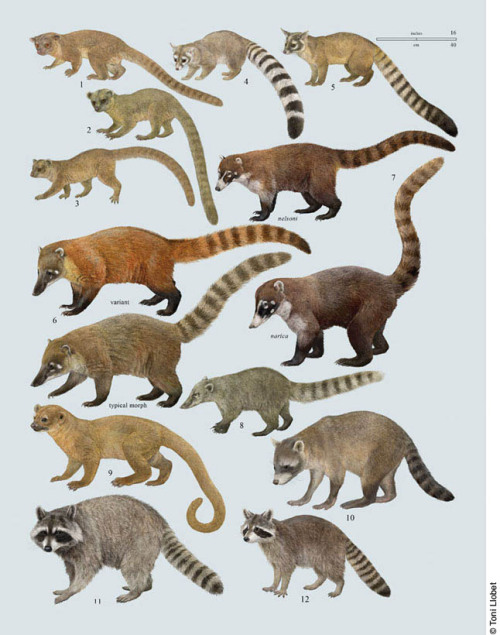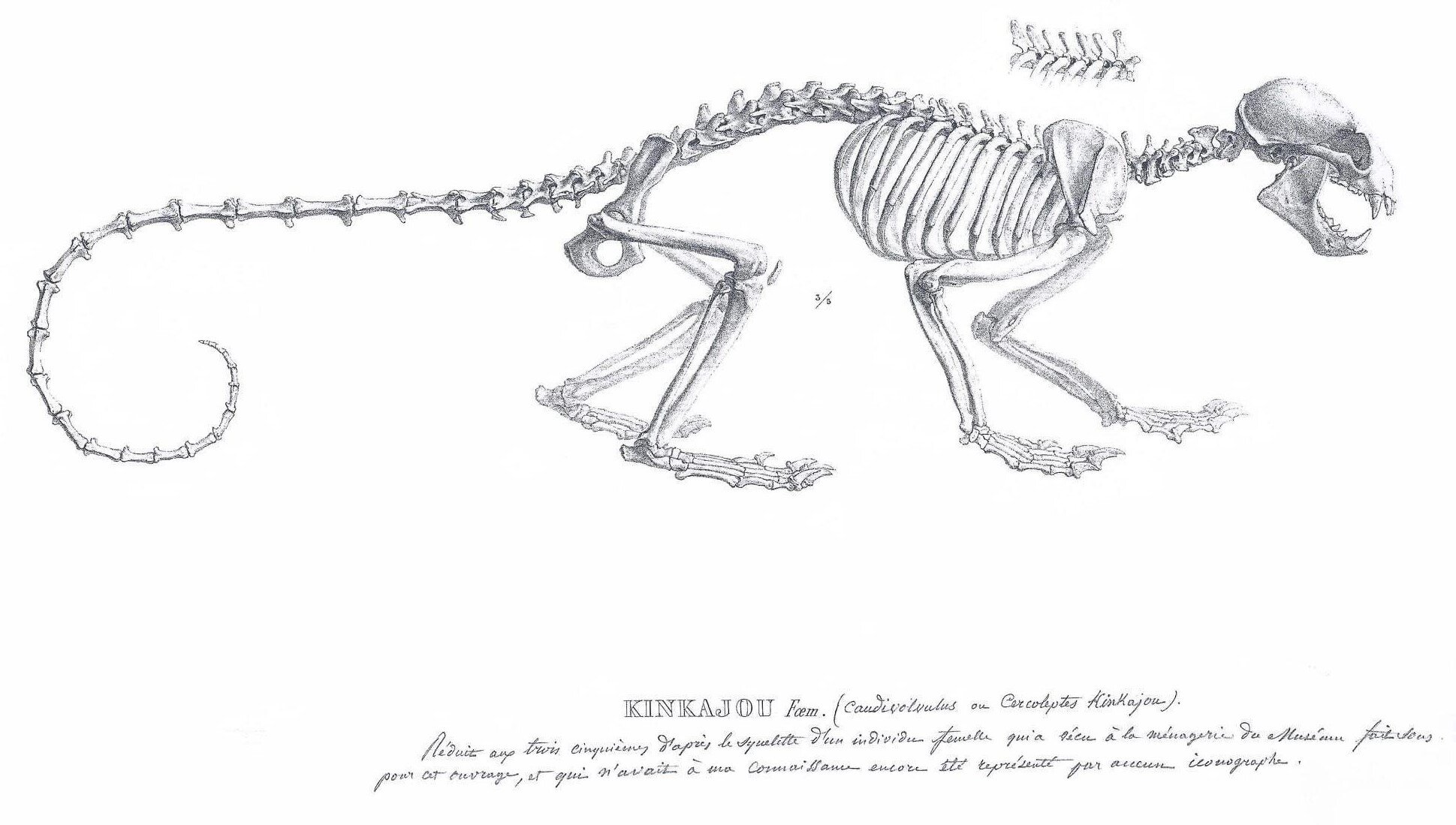Kinkajous appear to be a cross between a monkey/bear, but they are actually members of the raccoon family. They are related to coatimundis, ringtails, and olingos. These mammals are all members of the procyonidae family, which is a new-world order of carnivora. This also means they do not share a common immune system with us, as they are not primates. (That being said, still practice caution around them if you are ill.)
The Latin name for the kinkajou (pronounced “kink-ah-joo”) is Potos flavus — roughly meaning “golden drinker” because they have a golden-brown coat and are fond of nectars. Their nickname “honey bear” comes from their adoration for honey, as they love to raid beehives. Clearly, kinks have quite the sweet tooth.
Many people classify kinkajous as omnivores, however they are frugivores that are originally derived from carnivores.
Their anatomy reflects this notion with their short digestive tracts, similar to that of a carnivore. As frugivores, their diets are primarily made up of fruit, but also incorporate vegetables and some protein. Please see our diet section for more information.
Kinkajous are an arboreal species found in the rainforest treetops of South and Central America. They have dense fur to protect them from the rain and an internal physiological cooling system to help them battle the rainforest heat. Their hand-like (lacking an opposable thumb) paws are complete with sharp claws, which are great for climbing. A prehensile tail acts as a fifth appendage, and they also have the ability to turn their feet 180 degrees in order to help them get around the treetops efficiently. These guys are built for agility!
Unfortunately, kinkajous are hunted for their fur and meat in their indigenous locations. They are not endangered as of yet, but the destruction of their environments may soon change that classification. These special mammals find their way to other parts of the world because of the pet trade. This, of course, is a blessing and a curse. They do not — I repeat DO NOT — make good “pets.”


